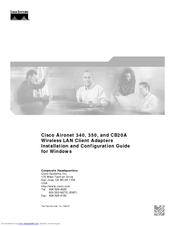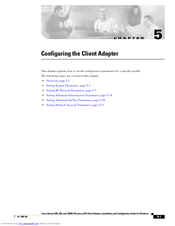Cisco Aironet CB20A Manuals
Manuals and User Guides for Cisco Aironet CB20A. We have 2 Cisco Aironet CB20A manuals available for free PDF download: Installation And Configuration Manual, Configuration Manual
Cisco Aironet CB20A Installation And Configuration Manual (310 pages)
Wireless LAN Client Adapters
Table of Contents
Advertisement

